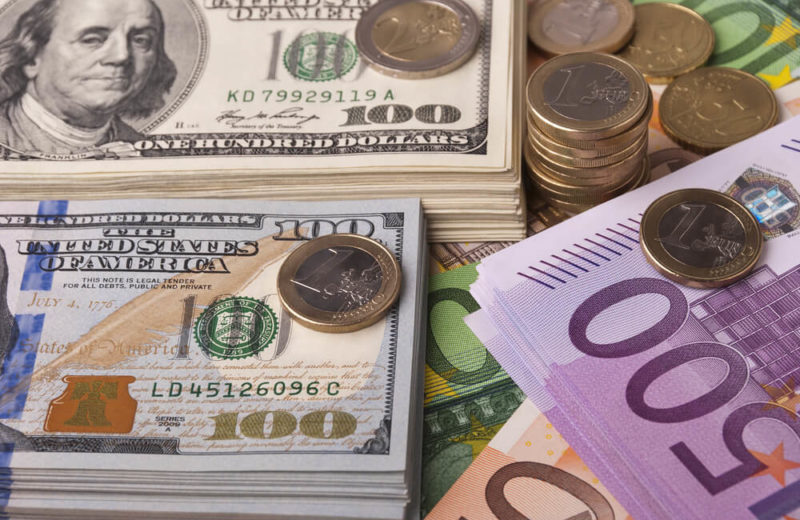In a remarkable move, the US dollar briefly touched the highly anticipated 150 level against the Japanese yen on Friday. The driving forces behind this surge were twofold: the rise in US 10-year Treasury yields, which approached the 5.0% mark, and the impact of Federal Reserve Chair Jerome Powell’s statements about the potential for further rate hikes.
Treasury Yields Surge and the Dollar’s Response
Tracking the Dollar-Yen Dance
The week saw the benchmark 10-year treasury management gain 30 basis points, marking its most significant weekly increase since April 2022. This surge to nearly 5.0% was a significant development, capturing the market’s attention. The surge in treasury shares, often associated with rate outlooks, had a substantial impact on market dynamics.
Despite the impressive performance of treasury services, the US dollar’s gains remained relatively modest this week. The currency skirted around the 150 level, which is viewed with keen interest by many market participants. This level is seen as a potential trigger for the intervention of Japan’s Ministry of Finance (MOF) to support the yen.
Market’s Caution and the Long-Dollar Dilemma
Jeremy Stretch, Head of G10 Currency Strategy at CIBC Capital Markets, highlighted the cautious sentiment in the market regarding the 150 threshold. Many anticipate the MOF’s involvement beyond this point, introducing an element of uncertainty. Adding to the complexity is the fact that the market has already adopted substantial long-dollar positions, making further additions challenging.
Speculator Sentiment and the Dollar-Yen Pair
Interestingly, speculators have nearly doubled their bullish dollar positions against other G10 currencies in this month alone. It reached a level not seen in a year.
The dollar-yen pair, which briefly touched 150.00 on Friday, is known to have a strong correlation with 10-year US yields. The market appears firmly anchored to the belief that the MOF might intervene at the 150 level. Should this belief waver, it could trigger significant movements in the dollar-yen pair, with the next key level at 155 per dollar, a level not seen since the mid-1990s.
Powell’s Impact on the Dollar
Major Currency Movements
Federal Reserve Chair Jerome Powell’s speech on Thursday significantly influenced the dollar’s trajectory. Powell emphasized the strength of the US economy and the tight labour markets, indicating that tighter borrowing conditions may be necessary to control inflation. However, he also acknowledged that rising market interest rates could reduce the immediate need for central bank action.
Market Sentiment and Expectations
The market sentiment has shifted towards the possibility of a pause or delay in a rate hike at the upcoming Oct. 31-Nov. 1 meeting. Powell did not rule out the potential for higher rates. However, his speech introduced a subtle softening of tone, according to Ray Attrill, Head of FX Strategy at National Australia Bank.
Money Markets and Rate Expectations
Money markets currently reflect an expectation of no change in rates at the Fed’s next policy meeting. The prospects of a rate cut in the first half of the following year appear to be diminishing, as revealed by a recent Reuters poll.
In contrast to the dollar’s journey, the British pound experienced a decline. It reached two-week lows following data releases that revealed a significant drop in British consumer confidence in October. The downfall showed up alongside the weak retail sales from the previous month.
Global Currency Treasury Stock
In the global currency market, the Chinese yuan remained steady on the offshore market. Simultaneously, the Swiss franc, driven by safe-haven demand, was poised for its largest weekly gain against the dollar in three months.
EUR/USD: Technical Outlook
Challenges and Opportunities for the Euro
EUR/USD exhibited a rebound on Thursday, although it encountered resistance around the 1.0600 level. Several factors contributed to this challenging environment, including surging US Treasury rates and escalating geopolitical tensions in the Middle East.
Technical Analysis
From a technical analysis perspective, it’s evident that if EUR/USD cannot sustain upward momentum, a downward trajectory is more likely. There is a possibility that the pair may test support at 1.0500. A breach of this level could lead to further declines, potentially targeting the 2023 lows at 1.0448, with the next focal point being 1.0350.
Potential Scenarios for EUR/USD
On the flip side, if market sentiment turns in favour of the bulls and EUR/USD successfully breaches overhead resistance at 1.0600/1.0625, buyers may regain control, opening the door for a rally towards 1.0765. This level represents the 38.2% Fibonacci retracement of the July/October decline and could signal a shift in momentum.















